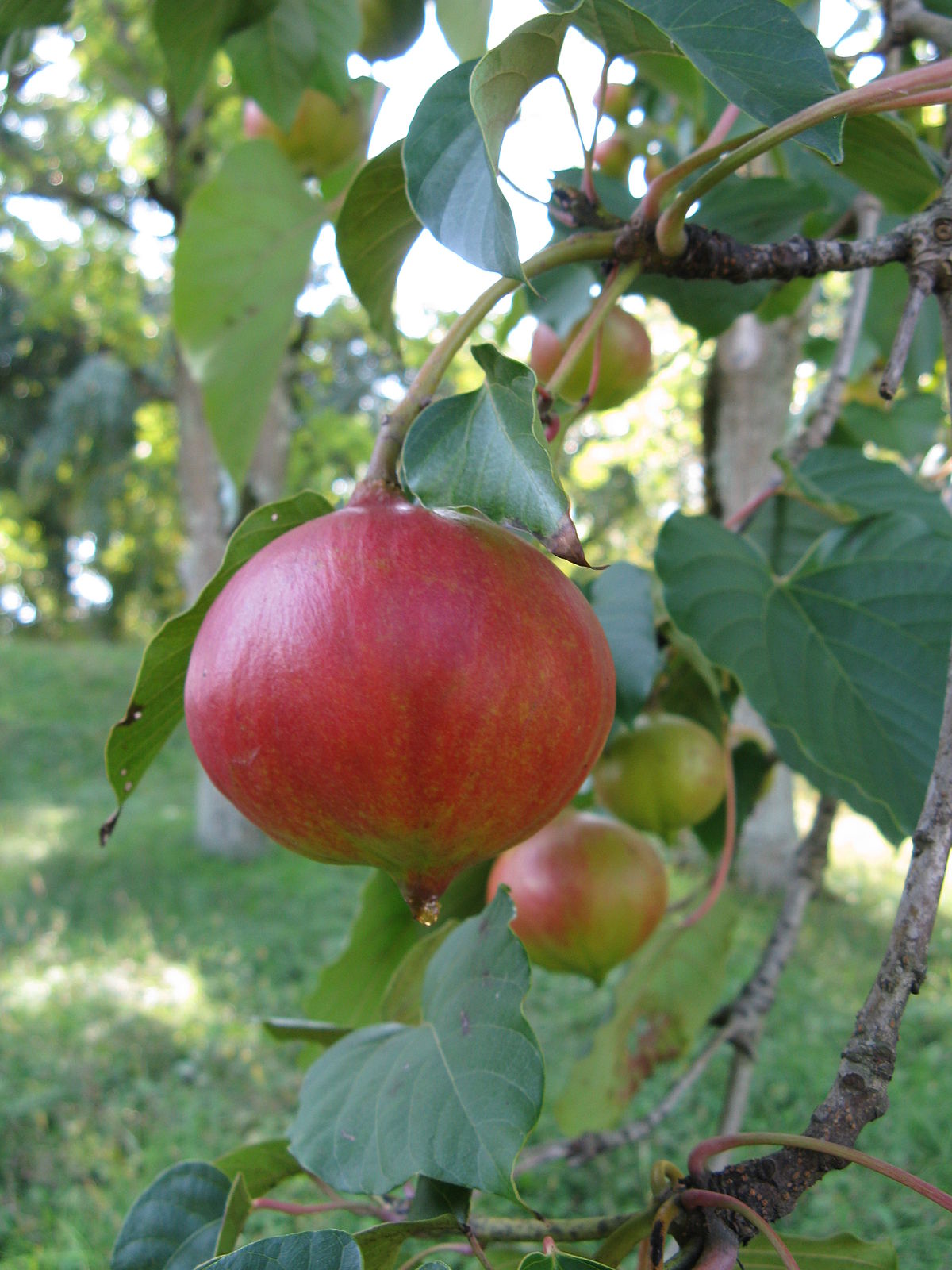Tung tree
(Vernicia)

Description
The Vernicia genus is a group of plants that belongs to the family Euphorbiaceae. This group contains only one species known as Vernicia fordii, commonly known as tung oil tree or China wood oil tree. This tree is native to China and is widely cultivated in other parts of the world, including the United States, Africa, and South America. The tree is famous for its oil, which is extracted from its seeds, and has various applications in industries such as paints, varnishes, and food. Botanical Description: The tung oil tree is a deciduous tree that can grow up to 20 meters in height. The tree has a straight trunk with a smooth gray bark. The leaves are large and oval-shaped, with a dark green glossy appearance on the upper surface and a lighter shade on the lower surface. The leaves are arranged alternately on the stem and can grow up to 30 centimeters in length. The tree produces small yellow-green flowers that grow in clusters, usually in the late spring or early summer. The flowers are unisexual, with male and female flowers growing on separate trees. The fruit is a small round capsule, which splits open when ripe to reveal three seeds that are enclosed in a hard shell. Distribution: The tung oil tree is native to China, where it grows in the provinces of Jiangxi, Hunan, and Guangdong. The tree has been widely cultivated in other parts of the world, including the United States, Africa, and South America, due to its high economic value. Ecological Importance: The tung oil tree is an important plant species for both humans and wildlife. The tree provides habitat and food for many species of birds, insects, and mammals. The tree is also useful for erosion control and is commonly used for reforestation projects. Cultural Significance: The tung oil tree has been used in traditional Chinese medicine for centuries. The oil extracted from the tree's seeds is believed to have many health benefits, including the treatment of constipation, coughs, and skin disorders. In addition, the tung oil tree has cultural significance in China. The wood of the tree is used in the construction of traditional Chinese furniture and is highly valued for its durability and beauty. The oil extracted from the tree's seeds has also been used for centuries in Chinese lacquerware. Industrial Uses: The tung oil tree is primarily grown for the oil extracted from its seeds, which has many industrial uses. The oil is used in the production of paints, varnishes, and coatings due to its high resistance to water and drying properties. It is also used as a lubricant, in the production of synthetic resins, and in the manufacturing of linoleum. In addition, the oil extracted from the tung oil tree's seeds is used in the food industry as a cooking oil and as a flavor enhancer in various dishes. Conclusion: The Vernicia genus contains only one species, Vernicia fordii, commonly known as the tung oil tree or China wood oil tree. This tree is native to China and has many industrial, ecological, and cultural uses. The oil extracted from the tree's seeds is highly valued for its water-resistant and drying properties, making it a popular choice in the production of paints and varnishes. Additionally, the tree is an important source of food and habitat for many species of wildlife and has significant cultural importance in China.
Taxonomic tree:







